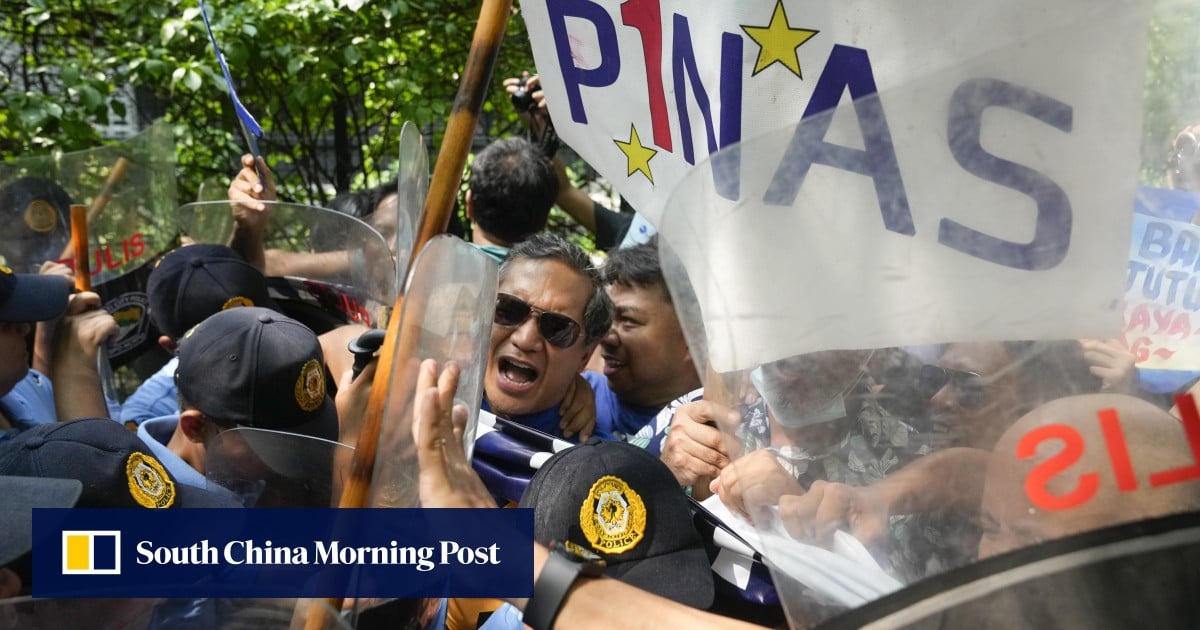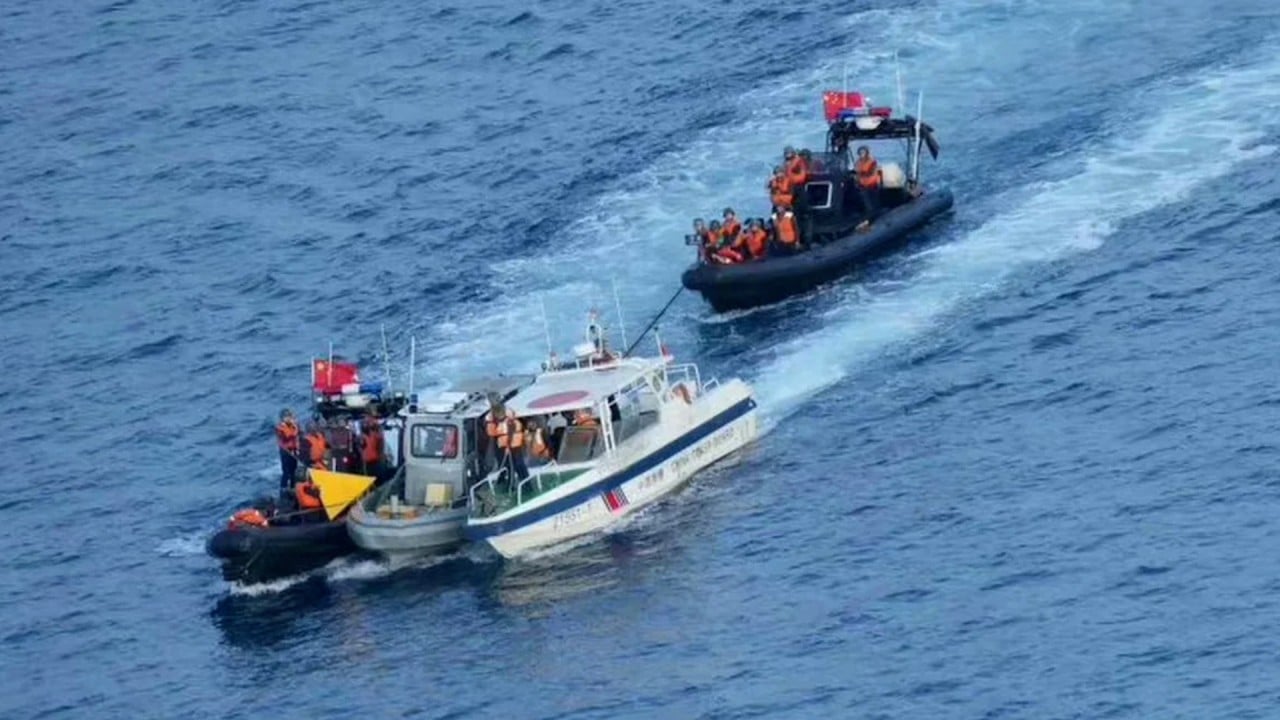“As part of standard operating procedures, these vessels were challenged and they responded accordingly,” Trinidad said.
The area where the ships appeared was commonly used by international vessels passing through “our waters”, he added.

The incident led to several Filipino personnel suffering injuries, including a sailor who lost a finger.
On June 14, the Philippine military observed a Chinese Navy amphibious assault ship in the West Philippine Sea, Manila’s name for an area of the South China Sea within its exclusive economic zone.
The 36,000-ton ship is capable of carrying nearly 1,000 marines, attack helicopters, battle tanks and other military equipment.
Preparation for bigger confrontation
A tribunal in The Hague ruled in 2016 that Beijing’s claims over the South China Sea through its so-called “nine-dash-line” had no legal basis and recognised Manila’s sovereign rights in the waterway. China, however, has refused to accept the verdict.
Security analyst Chester Cabalza, president of the Manila-based International Development and Security Cooperation, told This Week in Asia that the separate incidents involving the warships and the amphibious assault ship showed China was planning for larger-scale confrontations in the West Philippine Sea.
In particular, the amphibious platform of the assault ship could be used for coordinated attacks by the Chinese Navy, coastguard and maritime militias to escalate the maritime dispute, he said.
On Saturday, Beijing began enforcement of a regulation allowing its coastguard to detain any foreigners accused of trespassing in its territorial waters.
Cabalza said the presence of Chinese Navy warships was to send a message and test the unity of the Philippines and its allies, particularly the United States.
“While Beijing is intensely enforcing its non-trespassing law, it wants to see how Manila and Washington activate the archaic Mutual Defense Treaty [MDT]. Time is of the essence on how China takes advantage of the situation to evict the Philippines from the Sabina Shoal and the Second Thomas Shoal,” he said.
Given China’s intention to escalate the maritime dispute, the Philippines must step up its preparations in response, Cabalza said.
“The Philippines must enlarge its contingent in the contested waters, call for equal support of military help from allies and partners, and ask Washington what naval assistance it can provide to the Philippines now that China wants a naval confrontation with the Philippines.”

In May last year, United States President Joe Biden reassured Philippine President Ferdinand Marcos Jnr that Washington’s commitment to the defence of its Southeast Asian ally remained “ironclad”.
American security analyst Raymond Powell, director of SeaLight – a project based in Stanford University tracking grey-zone maritime activities – said he spotted two large ships of the Chinese coastguard sailing about 80 nautical miles off the west of Batanes Island on Friday morning.
Batanes, the smallest province in the north of the Philippines located near Taiwan, is viewed by security analysts as a potential flashpoint in the event of a major conflict between China and the US.
Beijing views Taiwan as a renegade province that should be reintegrated into mainland control, by force if necessary. While many nations, including the US, do not officially acknowledge Taiwan as an independent state, they oppose any use of force to alter the existing status quo.
Calling the vessels’ movement an attempt to intimidate the Philippines, Powell said: “It’s not the place that I usually see them. We call this intrusive patrolling. It’s a method the Chinese use to communicate that it has jurisdiction in other countries’ waters.”


